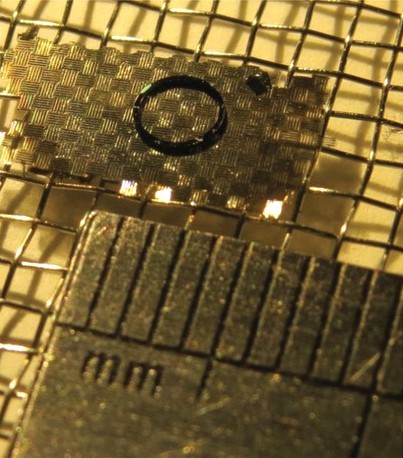The unmanned Mars Helicopter drone may be scheduled to launch soon, but it’s still just a single aircraft that will be useless if it conks out. With that in mind, scientists are now looking into an eventual alternative – fleets of tiny, cheap “Nanocardboard Flyers.”
Currently in development at the University of Pennsylvania, the small, flat, rectangular devices aren’t actually made of cardboard. Instead, they’re constructed from an aluminum oxide plate that has groups of slot-like microchannels running through its mostly-hollow interior. These boost its bending stiffness, keep cracks from propagating, and give it a corrugated cardboard-like structure.
They also allow it fly.
When the top surface of the plate is heated by exposure to bright light, the temperature differential between it and the plate’s shaded underside causes air to be drawn in through the open top of each channel, and expelled out through its open bottom. This creates a cushion of air beneath the Flyer, levitating it.

University of Pennsylvania
Each device weighs “about as much as a fruit fly,” although Mars’ thin atmosphere and weak gravity should theoretically allow them to carry payloads weighing up to 10 times more than themselves. Nonetheless, that’s still a pretty low weight limit, so the scientists are working on creating miniaturized chemical sensors that could be mounted on the Flyers.
It may even be possible to steer them, albeit close to the ground. If one of the tiny aircraft were to be deployed from a ground-based rover, that vehicle could conceivably track the Flyer with a laser, turning it by selectively shining the laser on different areas of its plate’s top surface. Utilizing multiple independently-controlled lasers, it’s even possible that a single rover could control a whole fleet of Flyers.
A paper on the research, which is being led by Asst. Prof. Igor Bargatin, was recently published in the journal Advanced Materials.
Source: University of Pennsylvania
Source of Article